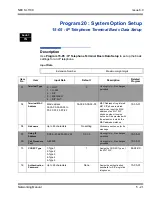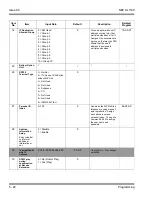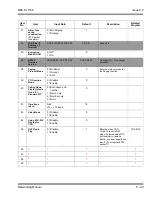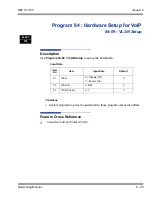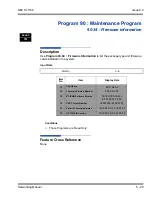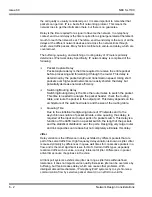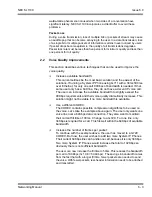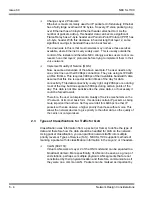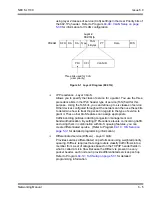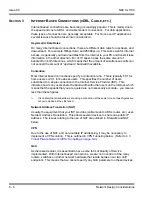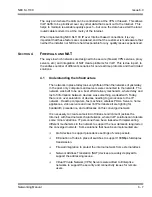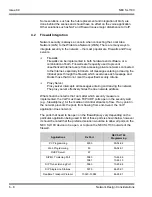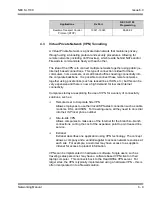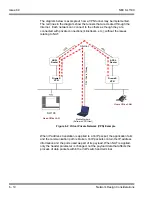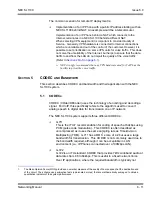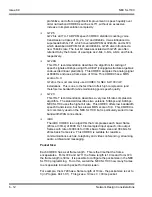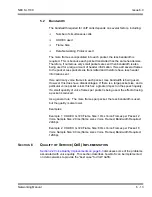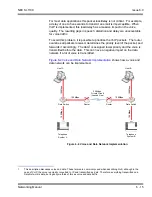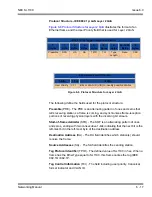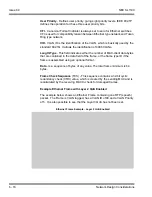
Issue 6.0
NEC SL1100
6 - 4
Network Design Considerations
Change Layer 2 Protocols:
Ethernet is most commonly used for IP packets. Unfortunately, Ethernet
has a fairly large overhead of 34 bytes. So every IP voice packet going
over Ethernet has a 34-byte Ethernet header attached to it. As the
number of packets add up, this header data can become significant.
Frame Relay has a 7-byte header and Point-to-Point Protocol (PPP) has
a 6-byte header. With this decrease in header length at layer 2, some
significant savings in bandwidth use can be achieved.
The down side to this is that most networks may not have these services
available, where Ethernet is very widely used. This is usually outside the
control of the installer and therefore NEC strongly advises users to do more
research on other layer 2 protocols before trying to implement them in their
voice network.
Implement Quality of Service (QOS):
Now, assume a derivative of the above example. The user needs only
one voice line over their 64Kbps connection. They are using G.729 with
a 30ms fill time. This requires 34Kbps of their available bandwidth. Also
assume that this line is used at certain times of the day for data
connectivity. This data connectivity is very light, only 20Kbps or so during
most of the day, but does spike to 50Kbps during certain points of the
day. This data is not time sensitive like the voice data, so if necessary it
could be forced to wait.
Therefore, the user can implement a Quality of Service mechanism on the
IP network. At its most basic form, this denotes certain IP packets as being
more important than others. So they would tell this 64Kbps line that IP
packets with voice deserve a higher priority than those without voice. This
allows the network devices to give priority to the other data, so the quality of
the call is not compromised.
2.3
Types of Classifications for Traffic for QoS
Classification uses information from a packet (or frame) to define the type of
data and therefore how the data should be handled for QoS on the network.
Using packet classification, you can partition network traffic into multiple
priority levels or Types of Service (ToS). NEC SL1100 supports methods of
marking a packet with its classification information in the Layer 2 or 3 headers.
VLAN (802.1Q):
Virtual LANs work at Layer 2 of the OSI model and can be equated to a
broadcast domain. More specifically, VLANs can be seen as a group of
end stations, perhaps on multiple physical LAN segments that are not
constrained by their physical location and therefore, communicate as if
they were on a common LAN. Packets can be marked as important by
Summary of Contents for SL1100
Page 1: ...Networking Manual NDA 31190 Issue 6 0 SL1100...
Page 2: ......
Page 4: ......
Page 22: ...Issue 6 0 NEC SL1100 1 2 Introduction THIS PAGE INTENTIONALLY LEFT BLANK...
Page 62: ...Issue 6 0 NEC SL1100 5 30 Programming THIS PAGE INTENTIONALLY LEFT BLANK...
Page 94: ...Issue 6 0 NEC SL1100 6 32 Network Design Considerations THIS PAGE INTENTIONALLY LEFT BLANK...
Page 134: ...Issue 6 0 NEC SL1100 8 10 DHCP Client THIS PAGE INTENTIONALLY LEFT BLANK...
Page 159: ...NEC SL1100 Issue 6 0 Networking Manual 9 25 Figure 9 7 Log In to IP Phone...
Page 181: ...NEC SL1100 Issue 6 0 Networking Manual 9 47 Figure 9 25 IP System Operation Setup...
Page 206: ...Issue 6 0 NEC SL1100 9 72 IP Multiline Station SIP Figure 9 36 NAPT Configuration Example...
Page 230: ...Issue 6 0 NEC SL1100 10 18 IP Single Line Telephone THIS PAGE INTENTIONALLY LEFT BLANK...
Page 232: ...Issue 6 0 NEC SL1100 11 2 NAPT Figure 11 1 NAPT Configuration Example...
Page 242: ...Issue 6 0 NEC SL1100 12 4 All DSP Busy Indication THIS PAGE INTENTIONALLY LEFT BLANK...
Page 290: ...Issue 6 0 NEC SL1100 13 48 SL Net THIS PAGE INTENTIONALLY LEFT BLANK...
Page 291: ......
Page 292: ...SL1100 Networking Manual NEC Corporation of America Issue 6 0...


